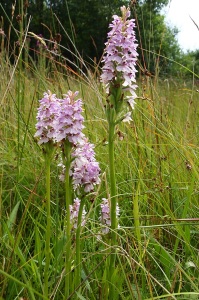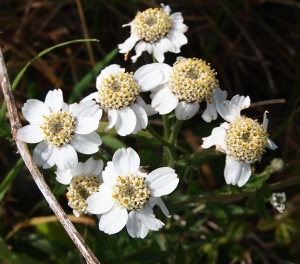Last Thursday was a great day for wildlife spotting. First we headed for a day out at Moorehall. Around the ruins of the hall we spotted a bat flying about in the middle of the day! Not a usual occurrence. The area is well known for it’s bats and includes a population of Lesser Horseshoe Bats, Ireland’s only horseshoe bat. Unfortunately, no photograph of that but we did see this beautiful Silver-washed fritillary (Argynnis paphia) not long after. This large butterfly likes deciduous woodlands so the woods around Moorehall are prefect habitat.
When we got home from our walk there was a female sparrowhawk (Accipiter nisus) sitting on the roof of the greenhouse. They nest in the conifier plantation just below the house and we have been treated to views during this last few weeks of the young and adults particularly during feeding time when the adults come home with some tasty morsel between their talons. Again I wasn’t fast enough with the camera. However, more was in store!
And our final wildlife highlight of the day was rescuing this strange creature from the water-butt by the greenhouse! It took a bit of time for it to dry off and probably also warm-up so plenty opportunity for some shots. It’s has two common names including giant horntail and great wood wasp (Urocerus gigas). The long rear appendage, which we originally thought may be a sting, is in fact a harmless oivposter. The females drills homes in wood and uses it to lay her eggs. It is perhaps somewhat unfair to refer to it as a ‘beast’ as suggested by my title, as really it looks pretty amazing. The near furry texture of it’s thorax reminds me of bumblebees. Still it’s probably not something you want to find flying around your bedroom!










































































